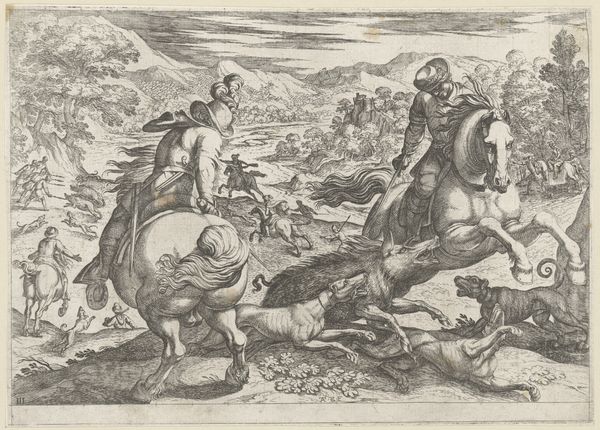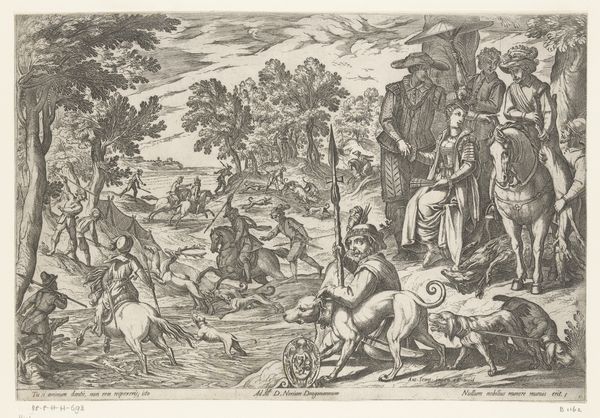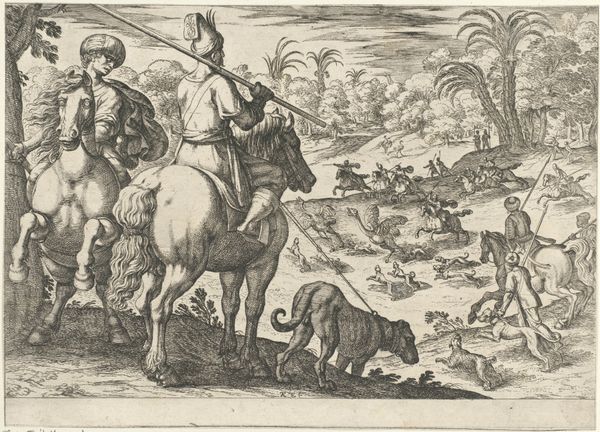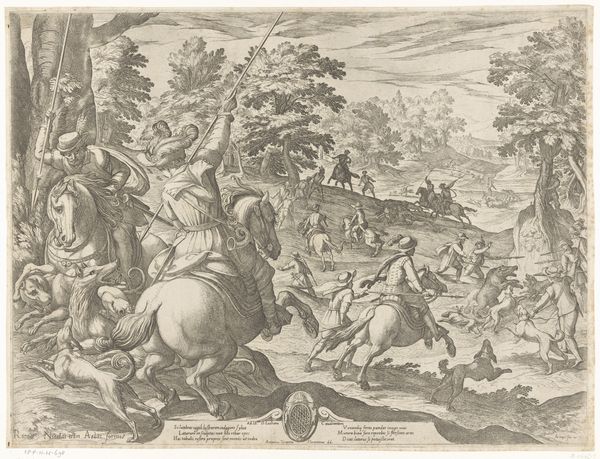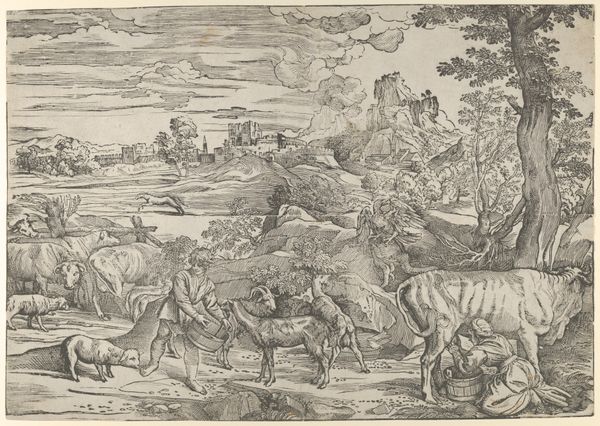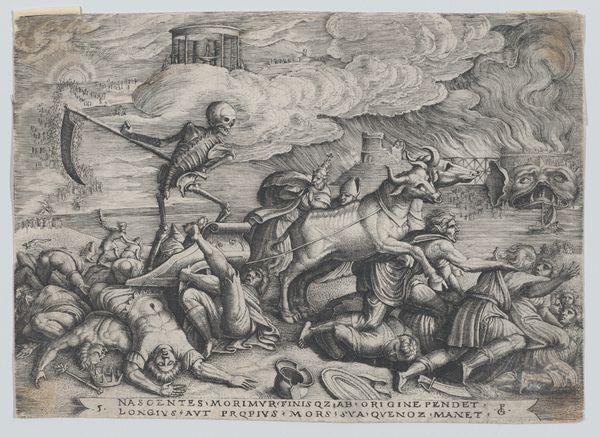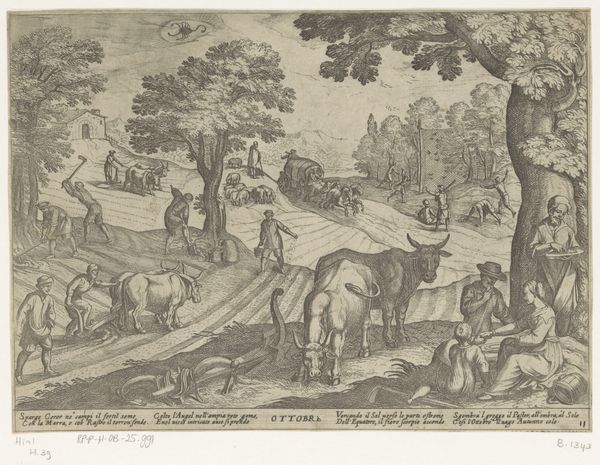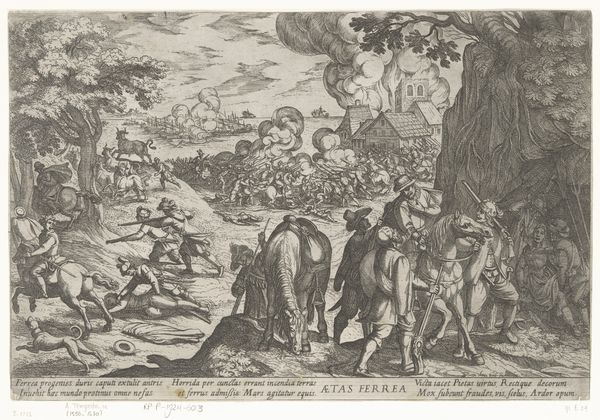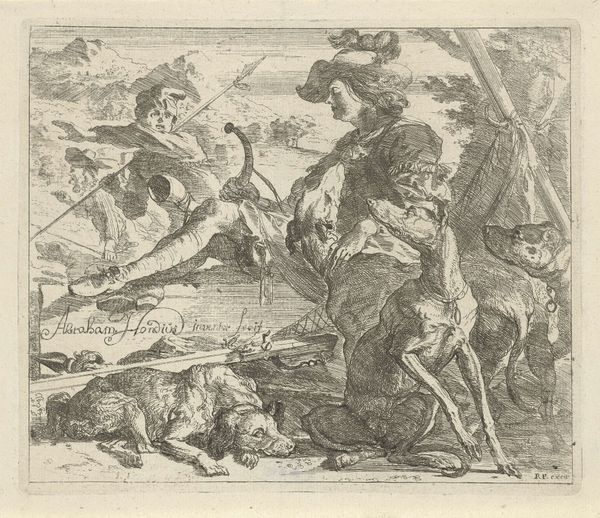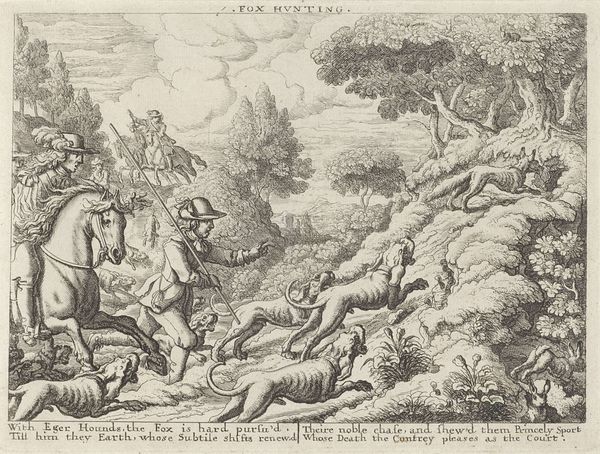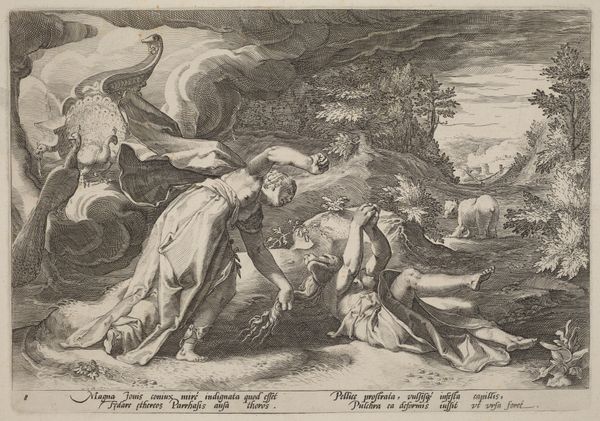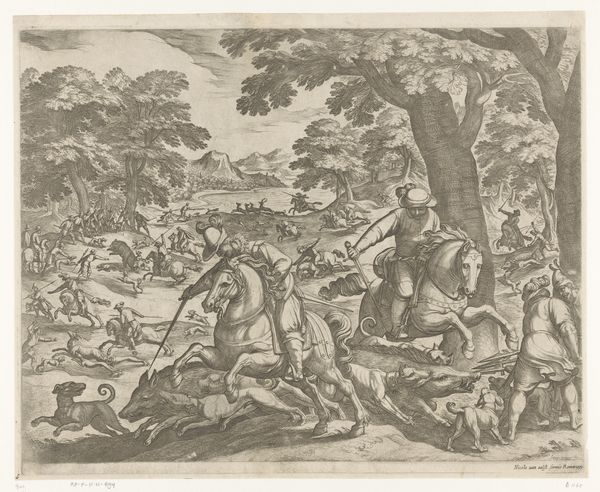
Dimensions: sheet: 18.5 x 26 cm (7 5/16 x 10 1/4 in.)
Copyright: National Gallery of Art: CC0 1.0
Curator: Look at this striking 1589 engraving, "The Rape of Europa" by Hendrick Goltzius. It's a Baroque interpretation of a classical myth rendered with incredible detail in the Mannerist style. What do you make of it? Editor: The initial impression is one of chaos barely contained! A bull violently traverses stormy seas while the land behind shows devastation – it feels like a snapshot of overwhelming disruption. Curator: Indeed. The piece depicts Europa's abduction by Zeus in the guise of a bull. Notice the Latin inscription along the bottom? "Europa crossed the sea on Neptune’s bull." Consider what the bull symbolizes here; fertility, raw power, even divine deceit. These emblems all reflect different patriarchal expectations and narratives from that moment. Editor: That visual tension between grace and violence certainly arrests the viewer. Europa looks almost resigned atop the bull, her gaze turned upwards – perhaps toward the Zeus figure lurking among the clouds. Meanwhile, her companions cluster ashore in distress, visually emphasizing Europa's displacement and isolation. It prompts me to consider how the image serves political messaging, or to simply consider changing norms in depictions of femininity or divine intervention in art from the period. Curator: Precisely. The dramatic composition with swirling lines enhances that feeling. And notice how Goltzius employs his skill with the burin, varying the lines to depict light and shadow. That gives the image a dramatic sense, and even depth of perspective in this chaotic ocean view. Remember that printmaking in this period served as crucial medium for circulating and reinforcing classical tales, influencing elite social discourse about gender, power, and political order. Editor: And this kind of readily circulated, widely seen engraving format cemented stories like these within a collective European cultural consciousness. An example like this shapes everything from high art to literature—as cultural and socio-political ideals or cautionary tales. Curator: Absolutely, and viewing it through the lens of myth offers complex layers about the past. This work lets us ponder what "The Rape of Europa" meant then, and its persistent echoes even now. Editor: A powerful reminder that an artwork, even a reproduction like this print, engages us to grapple with histories. Artworks embody evolving values—and provoke crucial conversations about the present.
Comments
No comments
Be the first to comment and join the conversation on the ultimate creative platform.
